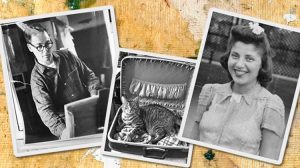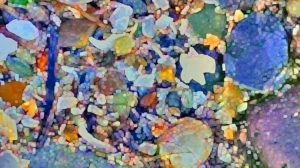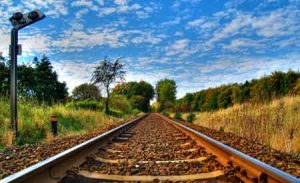
“What’s your road, man?—holyboy road, madman road, rainbow road, guppy road, any road. It’s an anywhere road for anybody anyhow.” – Jack Kerouac, On the Road
For the last several years, on his website www.RetracingJackKerouac.com, Joerg Haeske has documented his travels to places which figured in Jack Kerouac’s life and work. Now Joerg has gathered together some of his best photos of these towns, cities, neighborhoods, and buildings in the new book Anywhere Road: Retracing Jack Kerouac.
Haeske’s photos – of big cities, smaller towns, and places in between – were taken on train and road trips across the United States over a three-year span ending in 2012. In the book’s introduction, he explains that the book shows “buildings and areas that I felt are either important to [Kerouac’s] life story, were described in his books or captured my imagination when I read about them myself.”
Anywhere Road is presented in geographic sections. The first four are devoted to specific cities: Lowell, MA; New York, NY; Denver, CO; San Francisco, CA; Northport, NY. The 64 photos are presented by themselves, one to each glossy page; at the book’s end the location of each photograph and its significance in Kerouac’s life or work is noted.
It’s fascinating to see the places we’ve heard about in Kerouac’s books, or in biographies, as they are now. At least one is unrecognizable. Some appear virtually unchanged. Many, though transformed in some way – or surrounded by modern vehicles, buildings and technology – still remain imbued with some of their original character. There are stories under strata of pavement, under coats of paint, within aged walls, locked in the memories of neighborhood streets.
Haeske takes us on a journey through Kerouac’s America, showing us the houses Kerouac lived in and visited; the streets and landscapes he passed – whether everyday or once on a journey – the house he wrote On the Road in; the places he lived with friends, wives and lovers; schools; hotels; the bars he drank in; a sign for the California Zephyr; the “redbrick alleyways;” rivers and power lines winding endlessly across lonely landscapes.
This is the stuff America is and has always been made of, and what got deep down into Kerouac’s core.
The last section, “Reading the Landscape” includes photos from various locations; here are train depots, old buildings entered and left by thousands of feet, all of the sprawling emptiness – and fullness – seen from moving trains, through car windows and along the roads of America.
Readers of Kerouac, as well as those as aficionados of photos of main street America will find plenty to enjoy in this illuminating and evocative collection of photos.





Leave a Reply